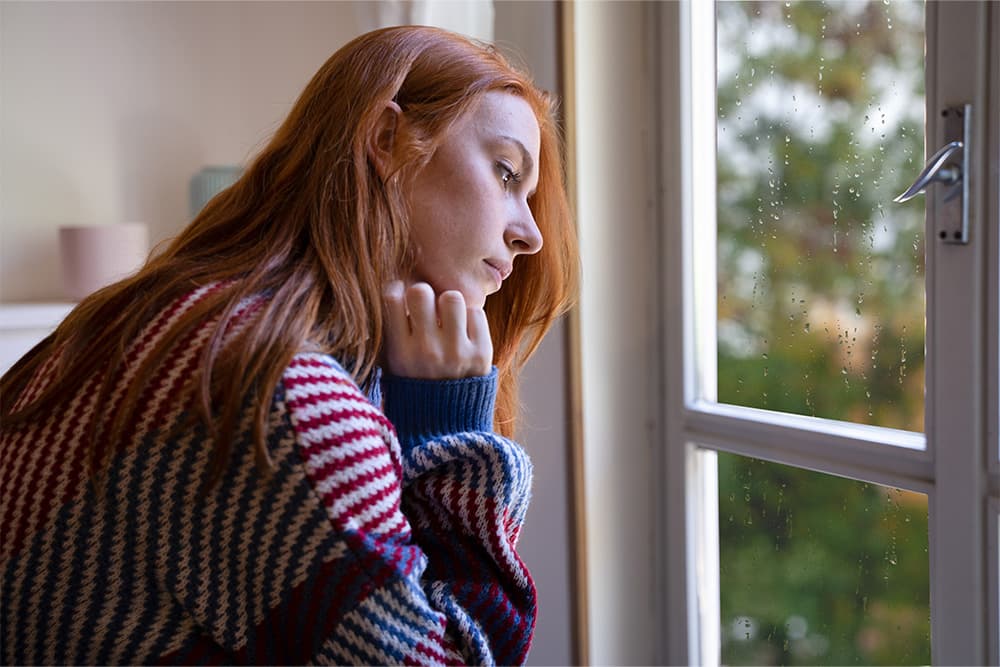I’ll admit, winter has never been my favorite season. I would gladly trade cold weather, less sunlight and getting sick more often for sunny days at the beach. The “winter blues” is a common term used to describe the increased sadness, lower energy and reduced interest in enjoyable activities many people feel during the winter months. For many people, these symptoms are minor and manageable with a few lifestyle changes, but for others, they become more intense and may develop into seasonal affective disorder (SAD).
What Is Seasonal Affective Disorder (SAD)?
Seasonal affective disorder (SAD) is a type of depression that follows a seasonal pattern. Most often, symptoms are prominent in winter months but can follow other patterns as well. Symptoms of SAD include:
- Depressed mood
- Less interest in activities
- Difficulty sleeping or oversleeping
- Being more fidgety and restless or more slowed down than usual
- Fatigue
- Reduced ability to think or concentrate
- Recurrent thoughts of death or suicidal ideation
One or several of these symptoms may occur for short periods of time. If you notice these symptoms becoming more persistent and affecting your relationships, work or school activities, you will want to actively take steps to manage them.
Ways to Manage Seasonal Affective Disorder
The cold weather and shorter days of winter are inevitable. The effects of seasonal affective disorder do not have to be. Take steps today to manage symptoms and allow yourself to thrive during all seasons of the year.
Get Moving
Physical exercise is one of the best ways to tackle depressive symptoms. It releases endorphins, improves physical health and can provide a sense of accomplishment.
Reach for Healthy Foods
Foods that are high in whole grains, protein and healthy fats provide energy and boost your mood. Sometimes this can be challenging. Some indulgence is okay (maybe even needed), but allowing large portions or high-sugar foods to become the basis of your diet will only worsen symptoms of SAD.
Stay Connected
When depression sets in, reaching out to friends and family can be daunting. Ironically, it is also one of the best ways to improve your symptoms. Having lunch with a friend, texting a family member or joining a book club are all ways to stay connected when sunlight and outdoor activities may be limited.
Try Bright Light Therapy (BLT)
BLT involves sitting in front of a light box for 30-60 minutes a day to mimic exposure to sunlight. Light boxes can be found for as little as $70 and do not require any special training to use.
Consider Professional Help
Both medication and mental health therapy have been shown to be effective at reducing the intensity of SAD symptoms.
Be Proactive
Because SAD follows a regular pattern, it is easier to anticipate the onset of symptoms than it is for other types of depression. While this pattern may not be exact, beginning these management strategies during the months leading up to the typical onset of symptoms will reduce the intensity and distress caused by symptoms.
Take an Online Screening
If you or someone you care about are concerned about Seasonal Affective Disorder or other mental health conditions, take our online screening now. Many screenings are available. All screenings are confidential and provide information to help you determine your next steps.

Nate Christensen, MS, LIMHP
Mental Health Therapist, Bryan Counseling Center
Nate Christensen (he/him) provides therapy to adults with a wide variety of presenting concerns. He has experience working with individuals diagnosed with schizoaffective disorder, schizophrenia, bipolar disorder, depression, anxiety, and personality disorders utilizing Dialectical Behavioral Therapy (DBT), cognitive behavioral therapy, and solution-focused techniques. Nate earned his master’s of counseling degree from the University of Nebraska at Omaha.









